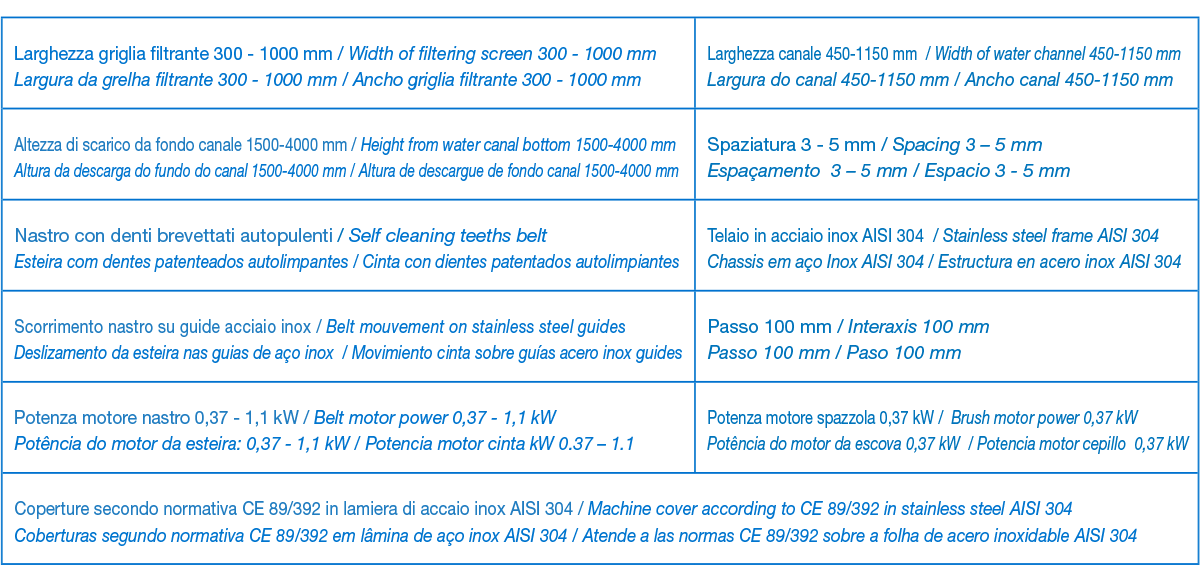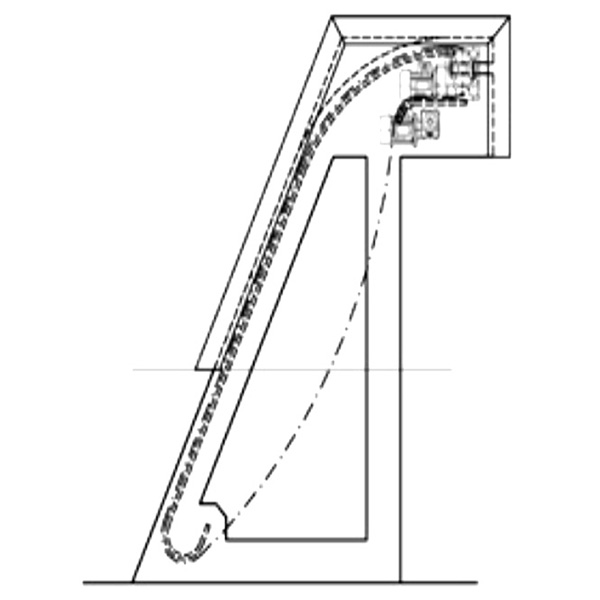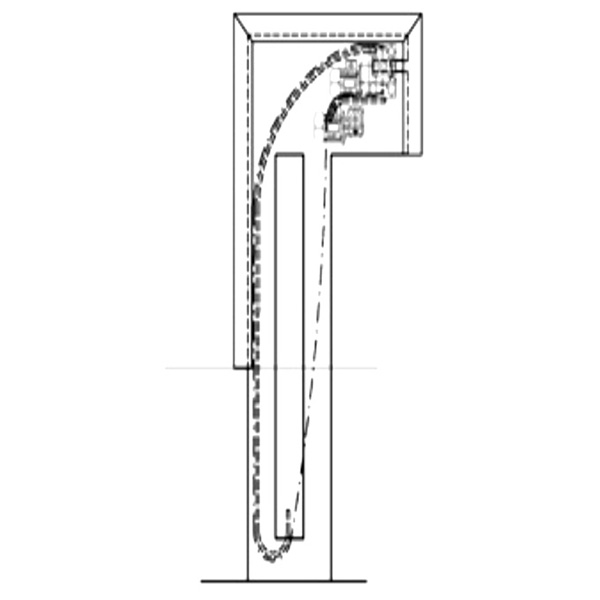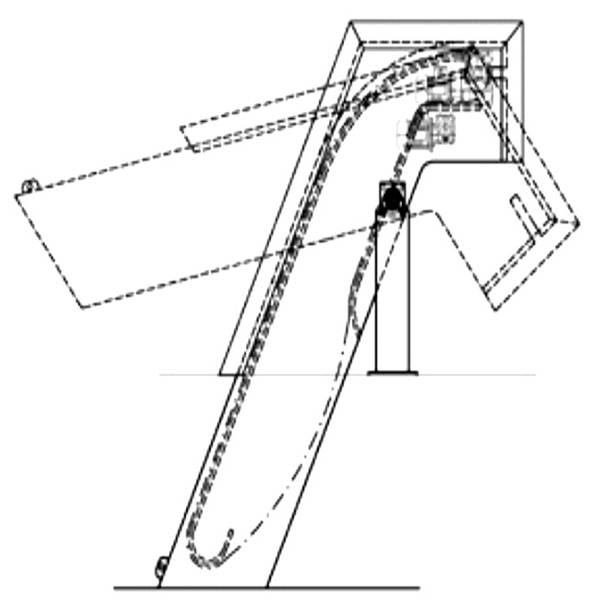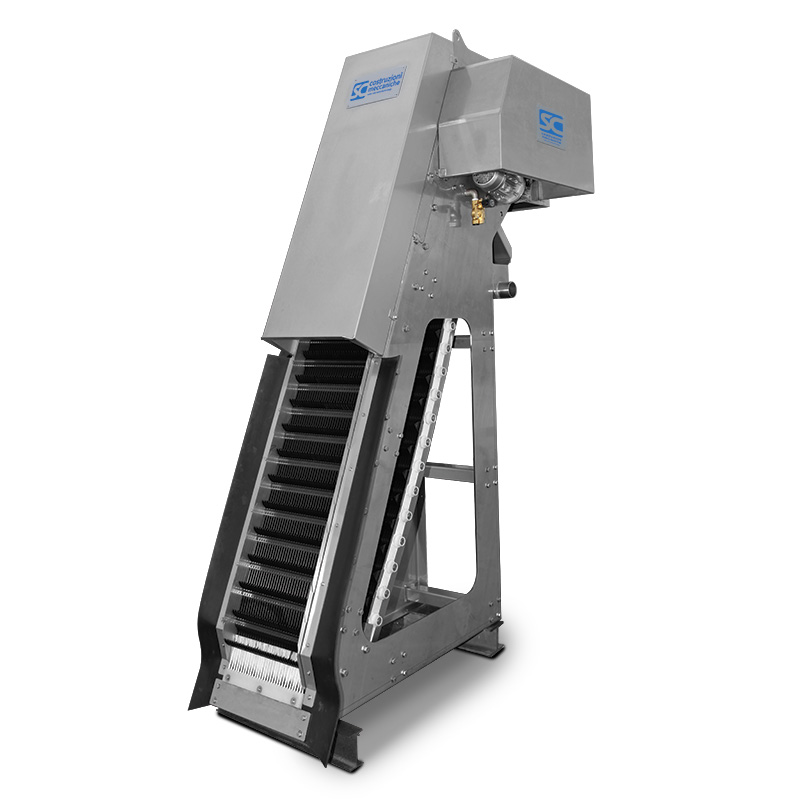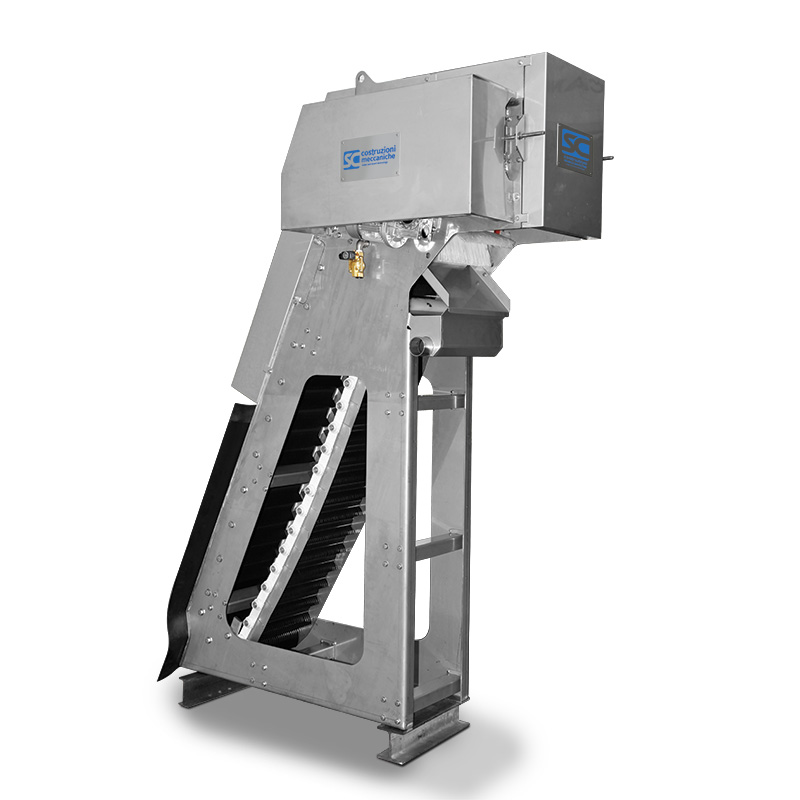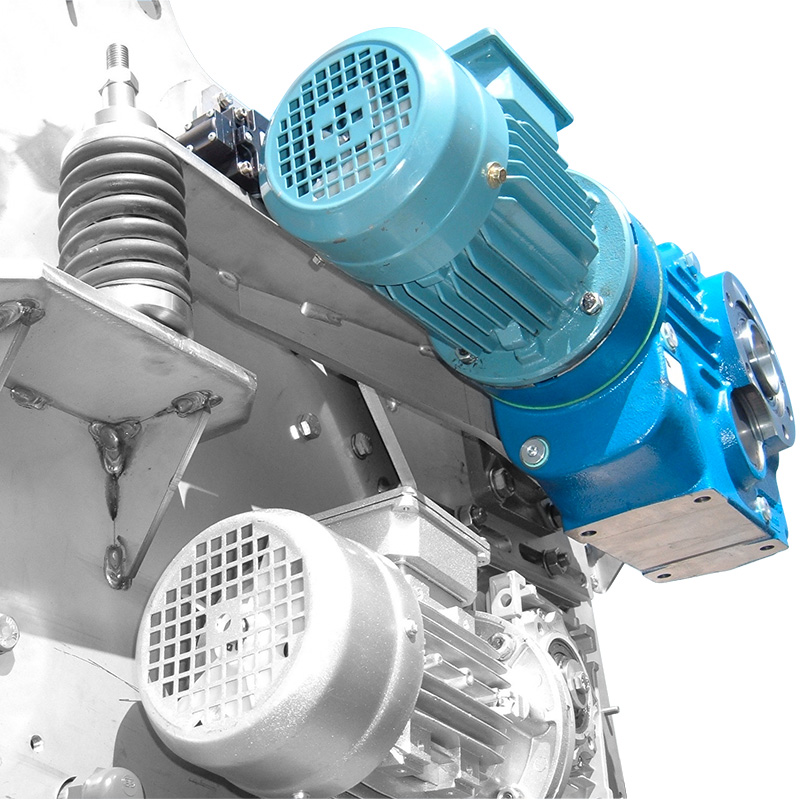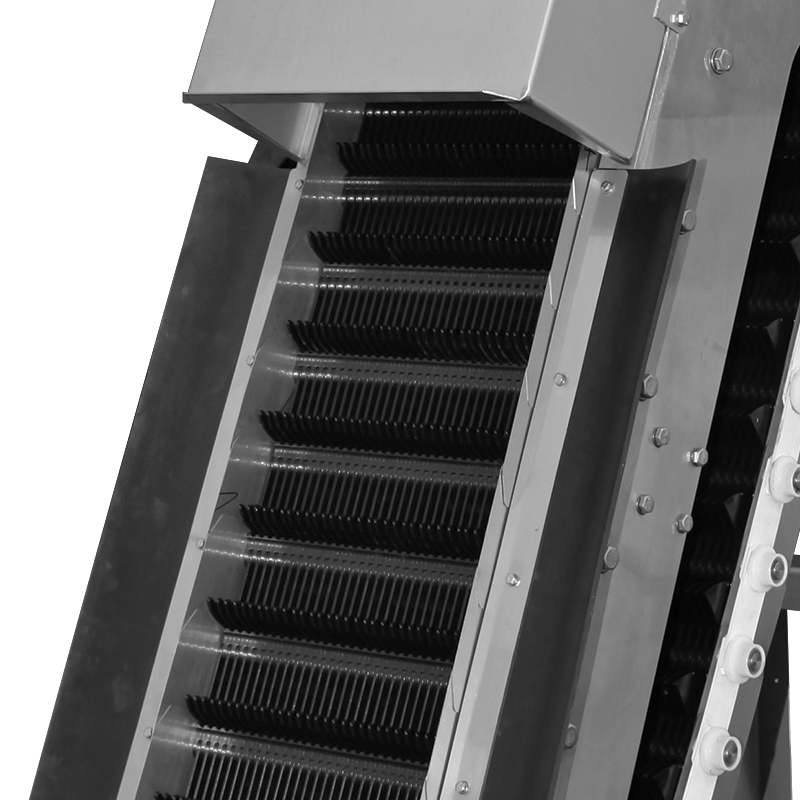Main features
The belt screen with flat teeth can be used for any fine screening treatments, when it Is necessary a continuous cleaning of the screen.The machine consists of a main frame and a belt with patented flat and mobile teeth made of plastic material, adequately shaped and hinged on stainless steel shafts.
The frame consist of two sturdy metal plate sides, kept positioned by cross-section structural steel; the standard frame is made in carbon steel protected with hot dip galvanization.
A long study and careful research have allowed to patent a tooth that combines functionality, strength and reliability. The top outline of teeth is such as to prevent the fall of retained material, while the dovetail bottom configuration allows the cleaning of the intermediate spaces on the back stroke.
The desired filtration gap is obtained by spacing the moving elements adequately. They are moved by two roller chains which in their turn are driven by two geared wheels fitted on the screen top and operated by a sturdy gear motor. In the lower part the two chains slide around two static guides.
In correspondence of the discharge zone there is a rotating brush driven by a second gear motor for the belt cleaning which helps the screened material to fall into the hopper below. A second stationary brush is placed in the lower part of the screen and works as a seal.
Gear reduction motor of primary Italian brand lubricated with life flat or oil, keyed directly on the shaft of traction of the ribbon; on the group reduction gear is climbed on a limiter of couple type electromechanical able to avoid damages to the ribbon in case of block.
Pipeline of washing of the filtering ribbon in stainless steel AISI 304
Carter fixed with screws to the structure which supports and protects all the moving parts, according to the safety regulation, made in stainless steel AISI 304.
Technical features
